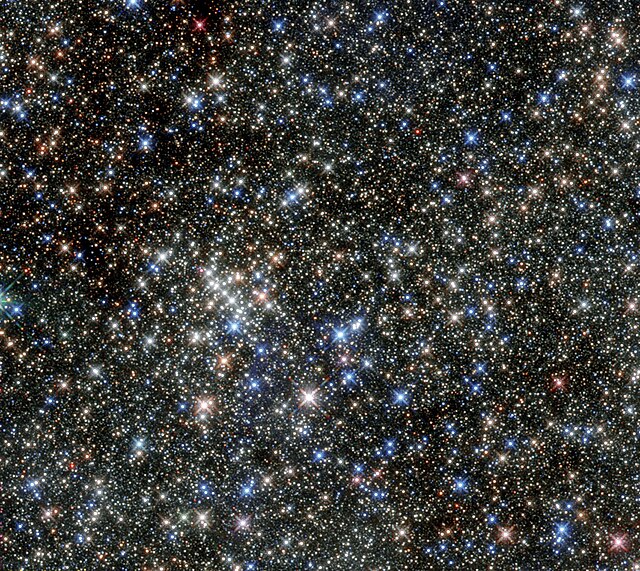The Pistol Star is an extremely luminous blue hypergiant star, one of the most luminous and massive known in the Milky Way. It is one of many massive young stars in the Quintuplet cluster in the Galactic Center region. The star owes its name to the shape of the Pistol Nebula, which it illuminates. It is located approximately 25,000 light-years from Earth in the direction of Sagittarius. The star has a large mass comparable to V4998 Sagittarii and a luminosity 3.3 million times that of the Sun (L☉). It would be visible to the naked eye as a 4th-magnitude star if it were not for the interstellar dust near the Center of the Milky Way that absorbs almost all of its visible light.
False-color image of the Pistol Star and Pistol Nebula Credit: HST NICMOS
The Pistol Star is the brightest star in this image of the Quintuplet cluster, just below centre.
Quintuplet cluster region, centered on the Pistol Star and its surrounding nebula
A hypergiant (luminosity class 0 or Ia+) is a very rare type of star that has an extremely high luminosity, mass, size and mass loss because of its extreme stellar winds. The term hypergiant is defined as luminosity class 0 (zero) in the MKK system. However, this is rarely seen in literature or in published spectral classifications, except for specific well-defined groups such as the yellow hypergiants, RSG (red supergiants), or blue B(e) supergiants with emission spectra. More commonly, hypergiants are classed as Ia-0 or Ia+, but red supergiants are rarely assigned these spectral classifications. Astronomers are interested in these stars because they relate to understanding stellar evolution, especially star formation, stability, and their expected demise as supernovae. A common example of a hypergiant is UY Scuti, although being a supergiant UY Scuti is considered a hypergiant by some people.
Great nebula in Carina, surrounding Eta Carinae
Very Large Telescope image of the surroundings of VY Canis Majoris
Field surrounding the yellow hypergiant star HR 5171
A hypergiant star and its proplyd proto-planetary disk compared to the size of the Solar System







